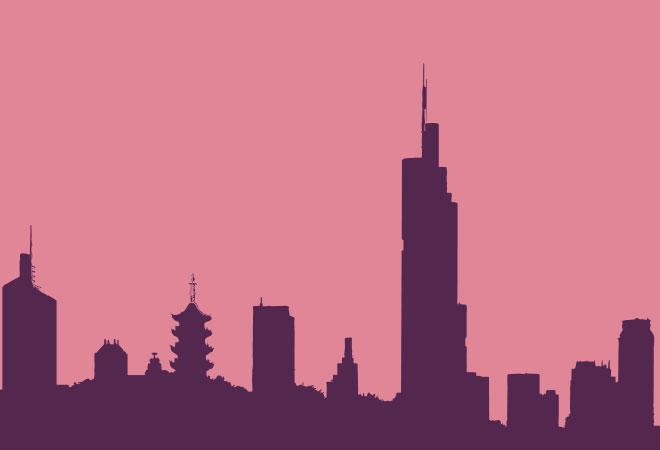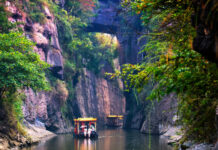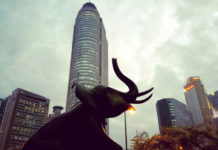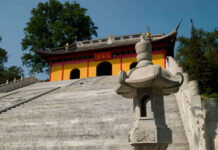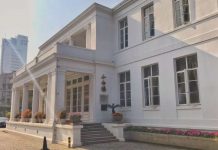One cannot go more than a few days in this fair city without hearing that Nanjing has the biggest, longest, tallest, oldest; this, that and the next. Ripe the city be for the pickings.
Therefore, herein read all about what Nanjing has to offer that is in a class of its own. For those which are well trodden ground, we hope to spread light on what may be previously little known facts, while in the process we have also unearthed a wealth of previously little known nuggets that remind us of Nanjing’s supremacy through the eons.
From luminous, local and long to botany, commerce, fortification, construction, politics and transport, in Nanjing another wonder is seemingly to be had on almost every corner, some from the old world, some very much anchored in the future.
While this list is by no means exhaustive, the 25 examples we have chosen are a representation and indication of Nanjing’s importance on a global and local scale.
1. World Wonders; Porcelain Tower

During the medieval ages, Nanjing was home to one of the Seven Wonders of the World, the Porcelain Tower of Nanjing. Situated on the South bank of the Yangtze River it was described as the “best contrived and noblest structure of all the East,” by French mathematician Le Comte. The building also known as “Temple of Gratitude” was designed and commissioned by the Chinese Emperor Yongle in honour of his parents.
Construction of the tower was completed in the 15th century, over a period of seven years. According to common belief the Porcelain Tower originally was supposed to comprise 13 stories with a total height of approximately 100 metres. As it was, even at nine stories and reaching a height of 80 metres feet, it ranked among China’s tallest buildings of the time.
Although it was not the tallest pagoda in China, it was commonly considered the most beautiful. The Porcelain Tower’s most outstanding characteristic was the material used in its construction, also lending the tower its name. The white porcelain bricks that lined the outside of the building reflected the sunrays during daytime. With its undoubted aesthetic appeal, the porcelain also provided a cooling function that prevented the tower from heating up.
The bricks of the Tower, which served as a Buddhist Temple, were glazed with different colours, combined to depict images of animals, flowers, and landscapes as well as Buddhist scenes.
The shape of the building was also striking, forming an octagon at the base, while the rooftop caught people’s eye due to its golden sphere. In order to reach the top floor it was necessary to climb 190 steps leading up a spiral staircase.
At night, approximately 140 lamps were hung from the Tower, illuminating and providing it with an even more stunning appearance than during daytime.
Due to its outstanding beauty, the pagoda quickly became famous at home and abroad, with Western visitors returning home to describe its beauty to their compatriots. The European admiration of its beauty even went so far as to incite the construction of a number of pagodas inspired by the Porcelain Tower, including one in London’s Kew Gardens and a possible replica.
Subjected to a turbulent history, the Tower experienced partial destruction in 1801, when a lighting bolt struck, blasting away the top three stories. However, they were soon restored. Less than 50 years later, in 1850 the Tower became the victim of the Taiping Revolution, in which the Rebels wanted to keep citizens from using the tower as a hideout or a fort from which to launch attacks from above. Therefore, they tore apart the stairwell inside the tower. While not completely destroyed, the Tower lay abandoned for the following six years. Finally, in 1856 the Porcelain Tower’s life came to an end when the Taiping Rebels over ran it in another angry attack. Their reasons for doing so are unclear, but it is commonly believed that they either wanted to make sure it could not be used as an observation post by their enemies or because they had a superstitious fear of it.
Wang Jianlin, one of China’s richest men, donated ¥1 billion in 2010 towards the tower’s re-construction. The new tower, named Bao’en Si, constructed on the same site, includes fitting tributes to its predecessor.
2. First Slow City in Developing World

Reading that the fastest developing country in the entire world is home to a “slow city” might come as a bit of a surprise. Yet, to be found in the municipality of Nanjing is the first slow city, not only in China, but in the entire developing world. The village of Yaxi, a small community of 20,000 in Gaochun District, decided that faster does not equal better; for which it was designated a “Slow City” in 2010 by Cittaslow International, an organisation that came to life as part of the Slow Food movement in Italy and whose aim it is to promote sustainable ways of living. As of 2013, Cittaslow has awarded182 locations the title of Slow City in 28 countries worldwide and even after three years, Yaxi remains the only city in China to be included on this renowned list of sustainable cities.
A Slow City takes pride in its relaxed pace that sets it apart from the hustle and bustle of the world’s metropoli. In Yaxi, people can only smile at city dwellers having to deal with problems such as food quality, worsening pollution and horrendous living costs. The only polluting industry in Yaxi, a chemical factory, was closed down by local officials 20 years ago. It is this devotion to sustainable development and environmental protection that earned Yaxi its slow city title.
“In Yaxi, we found people very committed to respecting nature. I remember the flowers and fruit trees and butterflies; thousands and thousands of butterflies in the fields.” explained Cittaslow director Pier Giorgio Olivetti.
Apart from needing to meet Cittaslow’s requirements of a population less than 50,000, Yaxi was expected to and excelled at taking measures against water, air and noise pollution, practicing organic farming, promoting locally produced crafts and encouraging eco-friendly development projects.
An environment where honking cars are rarely heard and factories are virtually non-existent, Yaxi is unsurprisingly specked with beautiful scenery, whether that be bamboo forests, tea plantations or fruit orchards. While the title of China’s only Slow City has definitely put Yaxi on the tourist map for tired town folk, the calm village now faces the worry of being overrun by hordes of tourists trying to flee from the rush of city life. (Laura Schmitt)
3. World Home of Brocade

Anyone versed in the art of weaving will know that Nanjing and Brocade go hand in hand. Its inclusion on the Intangible World Cultural Heritage of Humanity list by UNESCO in 2009, officially secured Nanjing’s status as the world’s home of brocade. Nanjing Yunjin (cloud brocade), as it is also called, emerged during the Wu Kingdom, in the third century AD; consequently it has a history of over almost 1,600 years.
At the height of its popularity, during the middle of the Qing Dynasty (1644-1911), brocade had become more renowned than any other silk product in China, at the time keeping 300,000 people in employment. The weaving technique was used to produce some of the most famous royal attire such as dragon robes worn by Chinese emperors. The value of Nanjing’s brocade was immense, with one inch of the noble fabric said to be worth an ounce of gold, making it an exclusive product affordable by only the richest of the rich.
Nanjing’s brocade history was formally established around 417 CE, when Nanjing, then known as Jiankang, experienced an influx of craftsmen, especially brocade weavers from Xi’an, after the local authority, the future Qin Kingdom, was defeated by the Eastern Qin Dynasty. This presence of highly-talented brocade craftsmen who had picked up an impressive skill set from Chinese minorities and possessed national fame led to the formation of a special brocade office and hence the establishment of Nanjing as the city of brocade.
During the Yuan Dynasty (1279 – 1368), Nanjing’s brocade skills received a luxurious makeover, when the Mongolian rulers of the foreign dynasty brought with them the tradition of decorating officers’ dress with gold and silver. Soon the gold-specked fabrics of Nanjing became popular with aristocrats and minorities alike, resulting in the formation of Nanjing’s monopoly on brocade production. Nanjing brocade was even listed as one of the special royal tributes.
In practical terms, the weaving process requires two craftspeople to operate the upper and lower parts of a complex loom up to 4m high to produce textiles. The person sitting at the loom is called a “thread puller”. Their responsibility was to pull the thread in line in the threading sequence, corresponding to commands entered into a computer keyboard of today. The second person would sit on the lower part of the loom. They were known “weaver”. Different songs help them remember different weaving techniques, too complex to simply be memorised without musical help. Therefore you could often hear singing coming from production sites of Nanjing brocade.
Fine materials would be incorporated into the weave, besides gold common additions were silk or peacock feather yarn. However, it is not only the exclusive material that makes Nanjing brocade a hyper-luxury item. Within the course of one working day only 2cm can be woven, adding additional cost in production time to the price of the fabric itself, thereby making it the most expensive type of silk production in China.
In the 21st century, the popularity of Nanjing Yunjin remains alive and well, ensuring the preservation of the old technique. These days it is often used to produce high-end clothing and souvenirs. Being a brocade weaver in the new millennium however, is not just a matter of creating luxuries; it is a job of historical importance. Nanjing’s modern weavers replicate ancient silk fabrics for researchers and museums, with the backing of the government who have invested up to ¥10 million on the protection and repair of Yunjin.
An example of such historic revival work is the “cloned” dragon robe from the Ming Dynasty (1368–1644). The original was excavated from the Dingling Mausoleum in the Thirteen Ming Tombs but was destroyed as soon as it was exposed to air. With the help of traditional weavers and after three years of hard work, the historical robe was successfully reconstructed in 2009. It is only one of many dragon robes reconstructed by weavers, which can be admired in the Nanjing Cloud Brocade Museum.
Therein lies the importance of modern brocade weavers; they are not only preserving an importing cultural technique of the past but also actively reproducing history for generations to come. (Laura Schmitt)
4. Largest City on Earth

The historical importance of Nanjing becomes obvious at the mention of its biggest achievement; from 1358 to 1425 CE Nanjing was the largest city in the world with a population bordering on half a million, or 487,000 to be more exact.
During almost half of its reign as the world’s number one city in terms of populous, Nanjing was also the capital of China under the Ming Dynasty. In 1368, a former peasant Zhu Yuanzhang, who had risen in the ranks of the army, officially proclaimed himself emperor in Yingtian (one of the names previously appointed to Nanjing) thereby founding the Ming dynasty with Yingtian as its capital.
The Ming Dynasty’s reign and the city’s status as global metropolis helped it flourish into a commercial centre, with the handicraft industry, especially porcelain production, reaching unprecedented levels, further fueling urbanisation and attracting migrants. Nanjing’s importance as a leading city of global status was further manifest through the navigator Zheng He, China’s most famous and accomplished sailor.
Under the Emperor’s protection and endorsement, the eunuch Zheng traveled to the West seven times. In a timeframe of 28 years, he traveled more than 50,000km and visited 37 countries including places such as Singapore, Vietnam and even Africa. The bulk of Zheng’s maiden fleet was constructed in Nanjing’s shipyard.
Setting sail from Nanjing, he went on to explore the world decades before his European counterpart Columbus, and returned with stories and items from his many travels, opening up Nanjing and China to the rest of the world and bringing back China novelties such as ostriches, zebras, camels, and Swahili ivory.
During this time, Nanjing was also visited by many foreign dignitaries. One of these, the sultan of Brunies, Abdul Majid Hassan, died during his visit to China in the year of 1408. His final resting place was unearthed in 1958 in the Yuhuatai district of Nanjing city, reminding of Nanjing’s glorious, global past.
Nanjing lost its title of the world’s no.1 city shortly after Emperor Yongle made Beijing the capital of his empire in 1421, diminishing the importance previously held by Nanjing. (Laura Schmitt)
5. Largest Encyclopaedia for 6 Centuries

Commissioned in 1403 by Emperor Yongle, the last Ming Emperor to grant Nanjing capital status, the Yongle Encyclopaedia was a mammoth project. It gathered together the entirety of Chinese knowledge from ancient times up until the early Ming Dynasty.
8,000 texts were incorporated into the book by scholars at the Imperial University of Nanjing, covering subjects ranging from science and art to religion. It took over two thousand scholars five years to complete the work and when it was finally published in 1408, the Yongle Encyclopaedia comprised almost 23,000 manuscript roles in over 11,000 volumes containing 370 million Chinese characters. This stunning piece of work was the largest known encyclopaedia of its time and remained so for six centuries. (Laura Schmitt)
6. Longest Suspension Bridge of its Kind

The fourth Nanjing Yangtze bridge is the longest suspension bridge with a twin-tower three-span suspension design in China. More generally speaking, it is the third longest suspension bridge in China and sixth longest in the entire world, at a length of 1,418m. It also takes the lead as one of three bridges in Jiangsu spanning the Yangtze on the Top 5 list of China’s longest suspension bridges. It is also 130m longer than the famous Golden Gate Bridge in San Francisco.
The preliminary design of the bridge began 10 years ago, in 2003, with construction commencing in December 2008 and the bridge ultimately opening in 2012, a year earlier than originally forecasted. The government invested ¥6.8 billion in the construction of Nanjing’s first suspension bridge, which features a dual six-lane carriageway and is meant to allow traffic speeds of 100 to 125 km/h.
The twin towers of the bridge are each 229m tall and are mainly composed of concrete. However, at the top of each tower a steel cross-beam was placed between the tower legs.
The bridge connects Hengliang town, the Nanjing Outer Ring Road, the Nanjing-Nantong Highway, Hongguang village plus towns such as Long Pao, Xianlin and Qilin in Jiangning District. (Laura Schmitt)
7. Largest Railway Station in Asia

At 458,000 square metres, Nanjing South Railway Station is the largest railway station in Asia and the second largest railway station in the world, in terms of Gross Floor Area.
Measuring 456 x 216 metres, the roof of the station is covered with solar panels that provide 7.17 MW of electricity, making it one of the most energy efficient public buildings in China.
The Nanjing installation just pips Shanghai Hongqiao Railway Station to the post, whose solar roof provides slightly less power, at 6.7MW. (Frank Hossack)
8. 2nd Tallest Building in China

While it is obvious that the Zifeng Tower is the tallest building in Nanjing, slightly less well known is the fact that it is (at the time this article first appeared) the second tallest building on the Chinese mainland, behind the Shanghai World Financial Center. That said, it will be deprived of this title and be relegated to third position next year, losing again to Shanghai with the completion of the Shanghai Tower. In 2015, Zifeng will slide further down the list as three more super skyscrapers are completed, all of them in Tianjin. Bask in the glory while you can. (Frank Hossack)
9. Tallest Concrete Pylons

Electricity pylons are commonplace up and down the streets of almost every town in every country. Placing those essential carriers of current across something as large as the Yangtze river is another challenge altogether. Dubbed the tallest concrete pylons on Earth, the power line crossings in Nanjing carry six conductors in two levels through mid-air for 2,053 metres. Other such power line crossings along the Yangtze are to be found in nearby Wuhu and Jianyin. (Frank Hossack)
10. Biggest Citadel

Much to the ire of Beijing, after the Republic of China government established Nanjing as its capital, Zhonghua Gate was renamed the Gate of China. The title was nevertheless apt; the mighty citadel was almost impregnable and could house a garrison of 3,000 soldiers. The largest city gate on Earth is flanked by two large ramps that lead to/from the mid and upper sections of the gate serving to quickly disperse and regroup soldiers on horse back. Zhonghua Gate was listed on cultural and scenic spots under careful protection by the Jiangsu provincial government in 1957 and the State Council in 1988. (Frank Hossack)
11. Bridge of 2,000 Stories

The Nanjing Yangtze River Bridge can be thought of as the mother of all Nanjing superlatives, laying claim to at least three world firsts. While it is common knowledge that it was the first bridge across the Yangtze built without foreign assistance, what is less known is that during its construction, a world record was set for working underwater, at a depth of 80 metres, while the foundations for the bridge’s nine supporting piers were anchored into the river bed.
Public access to such a spot high above the river is a sobering reminder that the bridge is also the world’s number one suicide location. Over 2,000 people have claimed their lives since the bridge opened in 1968 by jumping into the river (preventative fences have been installed where the railway line runs under the bridge); many survive the fall but of those who do not drown, most die later of internal injuries. (Frank Hossack)
12. First Five Star Hotel in China

Regarded by many as the finest five star hotel in the city, construction of what was then China’s tallest building, at a height of 111 metres, was completed in 1983. While the record was lost to Shanghai in the early 90s, the Jinling Hotel remained the tallest building in Nanjing until 1998, when it was overtaken by the Golden Eagle International Plaza. In modern day Nanjing, the recently opened phase 2 of the Jinling Hotel is the fourth tallest building in the city, at 242 metres.
Its glamourous reputation has made the hotel the choice of many a dignitary when looking to rest their weary head. Deng Xiaoping, father of China’s reform and opening up, stayed at the hotel on 17th February 1997, a mere two days before his death, while China’s then General Secretary Jiang Zeming and Kim Jong-il, former president of North Korea, came to the hotel in November 1991. From abroad, Romano Prodi and Angela Merkel both stayed at the hotel during their Premierships, of Italy and Germany, in 2006 and 2007 respectively.
Of particular note is the poignant visit by Deng, whose reforms included granting permission for the use of foreign capital in building hotels. As a result, Tao Xinbo, a Nanjing native and Chinese Singaporean, returned to the city with an eye to cashing in on the new economic policy. Putting in US$8 million of his own money, he used his connections to acquire another US$40 million in the form of a loan from HSBC in Hong Kong, and succeeded in giving China its first truly world-class hotel and Nanjing the tallest building in the country. (Frank Hossack)
13. Only Shop on Every Block

With its name literally meaning Jiangsu Fruit, the predecessor to Suguo was the Jiangsu Fruit & Food Corporation. Since the supermarket’s founding in 1996, the retailer has spread its tentacles to not only every block of Nanjing, but also the rest of Jiangsu, along with the provinces of Anhui, Hebei, Hubei, Henan and Shandong. Therein can be found over 1,900 branches that employ over 50,000 people.
Of the seven types of stores operated by Suguo, Howdy and SGCS are 24 hour convenience stores, while Life’s So Good with SG is the most international of the bunch, offering imported products comprising everything from liquor to coffee to shavers.
The company also operates a “no layoffs, no salary reduction” policy that weathered the global economic crisis of recent years while also opening 120 new outlets in 2009. (Frank Hossack)
14. China’s Most Famous Lantern Festival

For those of us who have been here for a while, the Chinese New Year (also known as the Spring Festival) can prove to be a very uneventful and frustrating affair. The streets are empty, shops are closed and travel is virtually impossible if not planned weeks in advance. Fortunately, we are lucky to be living in Nanjing, the city with the most famous Qinhuai Lantern Festival, dubbed by the PRC as an Intangible Cultural Heritage of China.
The Festival, held annually at the Confucius Temple on the last day of the Lunar New Year celebration, features up to 500,000 lavish lanterns varying in sizes, styles, and textures; depicting anything from legendary creatures and famous buildings to cartoon characters and world events. An old Nanjing saying bears witness to the local popularity of this fair; “without a lantern from Confucius Temple, you haven’t had a good Nian (Lunar New Year).” More recently, the lantern display has spread out on a stretch that is 3.5 km long, running up to the Ming Dynasty City Wall. Although the Festival has officially been held in Nanjing since 1985, its history dates back to the Qing Dynasty, with some sources extending its roots to the Eastern Wu Dynasty (the Three Kingdoms era). As described in the Classic novel from the 1700s, The Dream of the Red Chamber, the Manchus hosted an extravagant celebration with gongs and ear piercing drumming, echoing through the city walls. The fervency of the celebration was greatly diminished throughout the 19th and 20th centuries due to a changing political climate. Thankfully, Nanjing’s municipal government has revived this ancient festivity and is continuously working on its expansion.
The Confucius Temple (Fuzimiao) is the epicentre of the Lantern festival and consequently the liveliest district during this time. For the festivities, it is filled with stilt walkers, local folk-art displays, shadow puppets, beast dancing and countless other cultural distractions. Make sure to buy yourself a lantern, for as a little as ¥10, or treat your significant other to one of the many novelty balloons buoying randomly about. If you feel lucky, try your chances on the Money Tree located at the entrance of the Confucius Temple, where you throw a red-ribboned wish onto the gold-painted leaves. (Shahnaz Mouhamou)
15. Longest City Wall

Nanjing’s city wall differs from other great walled cities in China such as Beijing and Xi’an whose walls follow a square grid system. While the wall in Nanjing keeps the trend of following the city’s geographical layout, in practical terms this makes for a structure that meanders and undulates along the city’s mysterious topological lines. A walk along the wall not only gives one a sense of the ancient city’s grandeur, it is also a journey along a historical scroll, quite literally. Inscriptions into each of the bricks were performed by scholars, officials, artisans and folk people. As not only an important historical record of the city, the inscriptions bring one to an understanding of the multi-leveled inclusiveness that represented the Ming Dynasty. (Frank Hossack)
16. Oldest University of Traditional Chinese Medicine

Nanjing is home to one of China’s earliest established universities of Chinese Traditional Medicine. Founded in 1954, the Nanjing University of Traditional Chinese Medicine (NJUTCM) has earned the reputation of “Cradle of Chinese TCM Higher Education” at both national and international levels. NJUCM is famous for having established the nation’s syllabus for the study of TCM, compiling in the process a series of textbooks, and for having trained and developed China’s first group of TCM teachers.
NJUTCM is composed of 18,000 students with 1, 200 international students spread out over two campuses. The university has already cultivated an impressive group of 30,000 Chinese alumni and more than 8,000 international graduates hailing from 90 different countries and regions. The campuses offer four levels of education; a three-year professional program, a Bachelor program, a Master’s Program and Doctorate Program.
In 1993, NJUTCM initiated a joint Bachelor program with the Royal Melbourne Institute of Technology in Australia, making it the first University of TCM to begin cooperation with an internationally accredited western university. Throughout the years, NJUTCM has developed and maintained long-term relationships with universities, social organizations and governmental bodies spanning 30 countries globally. As one of the WHO Collaborative Centers on Traditional Medicine, the university has become a respected contributor to the internationalization of TCM.
Furthermore, NJUTCM has been officially accredited as an International Acupuncture Training Center, a Center for Clinical Pharmacology, a national training base for teachers of TCM and the first university in this field to be authorized to enroll and train international students. With 16 affiliated hospitals and 20 teaching hospitals in town, you have come to the right place if you are interested in exploring alternative medicine. (Shahnaz Mouhamou)
17. Nationally Acclaimed Antiquities

Prior to 1954, the Nanjing Museum was one of only two national-level museums in China; the other nationalized collection is still housed at the Palace Museum in Beijing’s Forbidden City. The Chinese title of bowuyuan (博物院), as opposed to the more common bowuguan (博物馆), was originally used to delineate a gallery administered by the national government. Though the Nanjing Museum is now administered at the provincial level, its massive collection of cultural relics retains international significance.
The Nanjing Museum has partially reopened this November after undergoing an extensive four-year renovation project that cost in the neighborhood of ¥400 million. The new complex covers an area of 84,500 square metres and is home to over 400,000 historical artifacts, although only 40,000 exhibits will be on display at a time. Some 32,000 square metres of the museum’s space was built underground, presumably for offices and archival storage. The new building comprises six exhibition halls; five permanent and one rotating. (Doug Hughes)
18. China’s Largest Plum Collection

Whether you are a tourist, a student or an expat, having survived the fierce winter, you will find solace and renewed hope for warmer days to come at Nanjing’s International Plum Blossom Festival. You do not need to be a floriculturist to appreciate the white, pink and red waves of Plum Blossoms cascading across an area of 100 hectares. Located at the picturesque Plum Blossom Mountain (Meihuashan) south of the Ming Xiaoling Imperial Tomb in the Purple Mountain scenic area, you are guaranteed to enjoy several hours of frolicking about in the midst of a history dating back to the Three Kingdoms era.
The Plum Blossom (prunus mume) or Meihua in Putonghua is the official flower of Nanjing and one of four national flowers of the Republic of China. The “King of Flowers” is more than just a seasonal symbol; this winter flower has been depicted in Chinese art and poetry for centuries. The flower’s five petals symbolise the Five Blessings (Wufu); longevity, prosperity, health, virtue and a peaceful death. As the harbinger of spring, undaunted by the snow, these flowers are highly respected for their resilience, patience and ethereal elegance. The festival is celebrated to welcome these flowers as a renewal of hope.
Slip into some comfortable shoes in preparation for a long walk through the largest collection of plum blossom trees in the country. There are 35,000 plum tree plants with 120 varieties, ranging in size from a miniature bonsai to an impressive plant rising 10 metres into the air. Make sure to pay homage to the “King of Blossoms”, a 400-year-old tree, regarded as one of the oldest Plum Blossom trees in China. The month-long festival, running from late February to late March, includes a variety of large-scale performances, commercial and cultural activities, art and cultural exhibitions, carnival games and rides and of course a delicious selection of local delicacies. (Shahnaz Mouhamou)
19. China’s Largest Commercial Enterprise

Founded in 1990 and listed on the Shenzhen Stock Exchange in 2004, Suning is now China’s largest commercial enterprise with over 1,300 stores nation wide, 120,000 employees and a hefty ¥100 billion in annual sales. A homegrown company, Suning’s corporate headquarters are located a mere 5km from downtown Nanjing boasting impressive five-star facilities.
Suning is growing and expanding at an exponential level. In 2009, the company launched its e-commerce platform, Suning.com, landing a spot in the top three B2C Chinese companies. Committed to transforming the retail industry, in early 2013 “Suning Appliance” changed its name to “Suning Commerce” in a bid to advance and transform in both the online and offline sectors and as a service provider to other businesses.
Furthermore, Suning is now on the path of becoming the first private company to jump on the banking bandwagon. In September 2013, The State Administration for Industry and Commerce announced the approval of the name “Suning Bank”. The company preempted Tencent Holdings by spending ¥120 million and ¥300 million in the establishment of an insurance sales firm and a micro-lending company.
Suning’s ambitions are, however, further reaching; the company has announced its plan to expand its product categories with the hopes of becoming China’s “Wal-Mart plus Amazon.” In October of this year, Suning Commerce joined with Legend Holdings’ Hony Capital to invest US$420 million in PPTV, a Chinese Internet video website. In the same month, the Nanjing-based company announced the opening of its first overseas R&D center in USA’s Silicon Valley. “China is on pace to become the largest consumer market in the world,” said Mr. Zhang Jindong, Chairman of Suning. “Not only will Suning’s sustained, long-term investment in innovation and new retail technologies drive aggressive business growth, it will help transform China from the world’s factory into the world’s market place.” (Shahnaz Mouhamou)
20. Resting Place of the Royal Rebel

Ming Xiao Ling is Nanjing’s contribution to the list of UNESCO World Heritage Sites in China. Construction of this tomb for the first emperor of the Ming dynasty, known as Hongwu, began in 1381. Over 600 years later, much of the burial complex still remains intact to this day.
The structures of Ming Xiao Ling offer well-preserved examples of early Ming architecture and stone sculptures but the tomb’s significance is more directly connected to its assumed occupants. The founder of the Ming Dynasty was the leader in a peasant rebellion that eventually succeeded in overthrowing China’s Mongol rulers, the Yuan Dynasty. Hongwu also commissioned construction projects, such as the city wall and the Ming Palace, that are still considered distinctive features of our city to this day.
The area surrounding the tomb at Ming Xiao Ling is also renowned in China for the plum trees that bloom in the park every winter. The name given to the Hongwu Emperor’s tomb includes a reference to his wife, the Xiaoci Empress, who is reported to have been interred at the site after her death in 1382. The “Xiao” in Ming Xiao Ling is taken directly from her royal moniker. (Doug Hughes)
21. Largest Inland Port of China

The Port of Nanjing is the largest and busiest inland port of China with a history tracing as far back as 229 CE. It is situated along the lower reaches of the Yangtze River running straight into the Huanghai Sea, covering an impressive area of nearly 200 km. There are many lakes, rivers and canals that connect to the Yangtze River making Nanjing’s Port a central hub for cargo and passenger-based transport. The facility is complimented by container terminals at Longtan Port and Xinshengwei Port, further consolidating Nanjing as the central inland port.
With 230 berths, eighty hectares of warehouses, and nearly 18 km of rail, this king-size port can accommodate ships of up to 35,000 tons and can handle an average of 60 million tons of cargo per year. It proudly boasts the largest petroleum shipping jetty, coal facility and foreign trade shipping dock in China and shall be able to handle 50,000 ton ships after the river is dredged to a sufficient depth after ongoing work.
Following the completion of the Yangtze River Bridge in the 1960s, it became the most reliable link between the northern and southern parts of China on the eastern coast. The port bridge has become an important symbol of strength and perseverance; designed and built solely by the Chinese (see p.16; “Bridge of 2,000 Stories”).
As China continues to develop at a rapid pace, the government has implemented a series of policies to continue the expansion of the port by way of assistance to the Shanghai International Shipping Center in the months to come. Shenzhen International Holdings has recently invested in the development of the Nanjing Chemical Industrial Park, which will allow the Port of Nanjing to develop five new deep-water terminals and two logistics centres. However, it looks like Nanjing faces some fierce competition up north; the city of Manzhouli port, in Inner Mongolia, has recently established itself as a front-runner in terms of imports, exports and trade-volume. Let the race begin! (Shahnaz Mouhamou)
22. Model for Forbidden City

The Forbidden City in Beijing is probably China’s most famous historical site. What not many people outside of Nanjing know, is that the Imperial Palace Version 1.0 was actually built right here in Nanjing with Zhongshan Dong Lu running through its centre. The Old Ming Palace of Nanjing was the blue print for the later construction of the emperor’s splendid home in the Northern Capital.
The Ming Palace was constructed in the 14th century but sadly did not survive numerous clashes with history, falling victim to destruction and gradual dismantling.
In 1367, the future founder and first emperor of the Ming Dynasty, Zhu Yuanzhang, initiated the construction of the magnificent palace to coincide with his appointment of Nanjing as the capital of Ming China. In 1368, only a year later construction was completed, and Zhu became the self-proclaimed ruler of the Ming kingdom, to be known as Emperor Hongwu.
In 1373 and 1392, Hongwu commissioned extensive refurbishment and expansion of the palace in order to preserve its imperial splendor. The steady decline of the palace began after the death of the Hongwu emperor. His grandson ascended the throne but immediately fell victim to the machinations of his uncle, Zhu Di, who felt he was the rightful heir to the throne. Upon his entering Nanjing, the imperial palace was torched, and the charred body of what was presumed the Emperor was recovered.
After Emperor Yongle’s seizing of the throne, the emperor decided to move the capital to Beijing in 1421, for strategic purposes relating to the threat of a Mongolian invasion. While Nanjing still remained the reserve capital of the country, its loss of status resulted in neglect of the city and its architecture.
A series of fires destroyed parts of the palace during the 15th century, such as in 1449, when the three main halls of the Outer Court (the ceremonial seat of government) burned down. Due to disinterest in the former Imperial Palace, the parts of the palace that had been consumed by the fire were never rebuilt.
For a very brief moment from 1644 to 1645, the Imperial Palace once again became the home of an Emperor, the Emperor Hongguang, who proclaimed the Southern Ming Dynasty in a futile attempt to resist the rise of the Qing Dynasty.
While Hongguang spent some of the little time he had as a ruler on rebuilding the already decrepid palace, his attempts were in vain as the Qing army reached the interim capital in 1645, bringing with them the Manchu army of the Eight Banners.
In the following years, the palace was gradually demolished by the Manchu, with any material that could be transported being removed to be used in the construction and decoration of other buildings. During the second half of the 17th century the former grand palace, which had housed a number of regents, became uninhabitable; its mere ruins remaining.
Those parts of the palace not stripped bare under the Manchus later fell victim to the Taiping Rebels, who used every stick and stone they could find in the ruins for the construction of their headquarters; the Presidential Palace. Ironically, the Ming Palace layout model can today be viewed in the very same building that caused the final demise of one of Nanjing’s and China’s historically most important buildings.
The only remnants of the palace today are a few palace ruins including five marble bridges, known as the Five Dragon Bridges, and Wuchaomen, the main portal to the palace with its surrounding park, a popular destination for Nanjing’s senior citizens to enjoy sports and recreation. (Laura Schmitt)
23. Guomingdang (KMT) Capital

During the Nanjing Decade, from 1928 to 1937, Nanjing reclaimed its status as a capital city, by becoming the designated headquarters of the Guomindang (KMT) under Chiang Kai-Shek.
Chiang was expelled from the original KMT government in Wuhan for the execution of hundreds of Communists and unionists in Shanghai in 1927. In reaction, he moved on to form his rival government in Nanjing. This move saw the total of China’s capital cities of the time rise to three; the internationally recognized warlord regime in Beijing, the Communist and left-wing Kuomintang regime in Wuhan and finally the right-wing civilian-military regime under Chiang in Nanjing, which went on to serve as Nationalist capital for the following decade.
Nanjing was chosen as the party’s capital due to its symbolic and strategic value. As the original location of the Republic established by Sun Yat-Sen and his provisional government, the city carried a strong historical importance. In a symbolic gesture and to consolidate Chiang’s emerging personality cult, the Generalissimo moved Sun’s resting place to Nanjing, to the grand mausoleum dedicated to the democrat. From a strategical point of view, the KMT stronghold was in the South of China, making Nanjing a more secure capital than Beijing. In addition, Chiang was born in the neighbouring province, which gained him strong popular support in the area.
In June 1928, after Chiang’s KMT captured Beijing, the international community recognized Nanjing as the sole legitimate government and capital of China, consolidating Chiang’s regime over a majority of the mainland, excluding warlord zones in Manchuria.
While the establishment of the KMT as leader of the country was initially well-received, Chiang’s actions soon quenched support for his rule. Chiang exploited the teachings of Sun Yat-Sen’s three stages of revolution; military unification, political tutelage, and constitutional democracy, on which the KMT rule was based. Under the pretence of adhering to Sun’s principle of tutelage, Chiang systematically eliminated his competitors, dropping all pretense of wanting to establish a democratic state. Further afield, the Nanjing administration under Chiang soon saw itself involved in struggles involving the same warlords the Generalissimo had initially managed to appease by allowing them semi-independent status. In fact, in 1930 the KMT only directly controlled 8 percent of the geographical area of China, with the remainder under the KMT’s indirect influence through alliances with provincial military governors.
With the consolidation of his government, Chiang tried to eliminate as many of his warlord rivals as possible in order to gain full control of the parts of China that had so far eluded him. Unsurprisingly, the warlords did not take the the threat to their rule lying down and the Nanjing government soon found itself involved in multiple power struggles, not forgetting the on-going conflict with the Communist party, leaving no room for focus on reforms or policy improvement.
In 1937, while the KMT rule had suffered a decline in support, it was still going strong. However, the infamous invasion by the Japanese army and the ensuing Sino-Japanese war ultimately led to the abandonment of Nanjing as Chiang’s KMT headquarters.
By December 1937, Nanjing had fallen to the Japanese, resulting in Chiang moving his government inland, initially to Wuhan and then to Chongqing. By withdrawing far into the West, Chiang managed to stretch the Japanese supply lines. In resistance to the invasion he further authorized the use of scorched earth tactics, which killed a large amount of Chinese nationals. During Chiang’s retreat from Nanjing, the KMT army further deliberately destroyed all dams around the city as a means of delaying the approach of the Japanese army. This course of action was responsible for the deaths of 500,000 people in 1938 Yellow River flood, which occurred due to the destruction of the dam.
Three years after the end of the Nanjing Decade, he who had previously expelled Chiang Kai-Shek from the Wuhan KMT government, Wang Jingwei, set up a puppet state of the Japanese in Nanjing known as the Reorganized National Government of China.
In 1946, after Japan had surrendered and its Nanjing puppet state was abolished, Chiang returned to Nanjing and reinstated the city as KMT capital for the final three tears of his reign. During this time the Nationalist Party faced its fatal blow, when Chiang’s economic policies alienated many businessmen who were some of the most important supporters of the KMT regime. Shortages of raw cotton, the leading sector of Chinese industry at the time, led the KMT government to an aggressive response; the implementation of a strict control of cotton supply and a price freeze on cotton thread in textiles. The cotton textile industrialists, who made up an essential part of the country’s industry, flew in droves to Hong Kong or Taiwan between the end of 1948 and beginning of 1949 to escape the soaring inflation and restrictions to their business. With them, not only the KMT’s economic backbone was shattered but also their spirits. On April 23rd, 1949 the People’s Liberation Armied conquered Nanjing, ending the reign of the KMT and Chiang Kai-Shek on the Chinese mainland. (Laura Schmitt)
24. Endpoint of the Shanghai-Nanjing Railway Connection

The year of 1908 marked the grand opening of a historically important railway station, Nanjing West. The train station was not only Nanjing’s oldest railway station and for a while China’s largest but also its connection to the outside world as the starting point of the old Shanghai-Nanjing Railway.
Its construction began in 1905 and was completed over the course of three years. On 29th March, 1908 the connection between the two important cities was officially open for business.
A passenger on its maiden voyage was the British Consul General to Shanghai Sir Pelham Laird Warren. The trip covered 193 miles, taking Warren 5 hours and 37 minutes.
The station was located in Xiaguan District, close to the southern bank of the Yangtze River. Apart from simplifying travel between Nanjing and Shanghai the station was the point arrival, where passengers traveling from the Shanghai area to places in China’s North such as Beijing would have to get off the train and board a river ferry, to resume their northward journey from Nanjing North Railway Station, located on the opposite side of the river.
Nanjing West was a witness to a period of conflict, turmoil and drastic change. It carried out its duties through the fall of a dynasty, the founding of a Republic, civil war, the Japanese occupation, the Cultural Revolution and the Reform and Opening of China.
On New Year’s Day of 1912, the first day of the Chinese Republic, its founder and father of the Chinese Nation Sun Yat-Sen arrived at Nanjing West to go on to make history in the city.
At times, Nanjing West was however more than a mere witness, instead being involved in and influenced by the historical happenings around it. In 1947, the returned Nationalist government under Chiang Kai-Shek ordered the expansion of Nanjing West Railway Station. After construction was completed, Nanjing West was the largest railway station in the whole of China.
Upon the flight of the Nationalist government from Nanjing in 1949, the Nationalist army blew up parts of the railway station including the main building’s passenger waiting halls and luggage halls as a final parting gift to their approaching Communist opponents. In 1950, the new communist leaders began the renovation of the station, covering up the damage left behind by the civil war.
Reflective of the fluctuating state of the nation during which it existed, the station went through a number of name changes. Initially known as Jiangning Station, it was renamed Nanjing Station (南京车站) in 1927, to better reflect its importance as a major transport hub of Nanjing. In 1930, after the station had become too old to keep up with modernisation, a new station was built in its stead, known as Xiaguan Railway Station (下关火车站). After the flight of the Nationalist government and the coming-to-power of the Communist party the station was once more renamed into Nanjing Railway Station(南京火车站).
In the second part of the 20th century, the station faced a decline in its importance due to the emergence of numerous competitors. This was reflected in its name, when it was finally named Nanjing West (南京西站) in 1968, with the opening of the Yangtze River bridge that led to the construction of the new Nanjing Railway Station closer to the city centre. It retained the name until its shutdown 44 years later.
After over a hundred years of helping travellers reach their destination, Nanjing West sent off its final passengers to Xiamen on the K161 at 10.17 pm on 25th March 2012, marking the end of passenger transport carried out from the traffic-hub of the past.
Beloved by many Nanjingers, it got a grand send-off a week before its shutdown. On Wednesday 14th March 2012, 800 travellers bought tickets for the 7102 train from Zhonghua Men station to Nanjing West, to say farewell to their old friend. Even on a weekend, the train usually sold half that amount at best. Since its closure there has been talk of it being converted into Nanjing’s first railway museum. (Laura Schmitt)
25. China’s Tallest Christmas Tree

During Christmas 2011, Nanjing was the backdrop for a festive superlative when what was believed to be China’s tallest Christmas tree at the time was set up outside the Nanjing International Shopping Centre. The stunning Eastern-European style Christmas tree rose 30m high into the air, specked with bright lights, bringing the most important holiday of the West to the East in a grand fashion.
Unsurprisingly, remembering the tree’s location, it was accompanied by a Christmas Shopping Festival running until December 25th inviting Nanjingers to complete their Christmas shopping while enjoying the Christmas spirit spread by the super-sized festive fir. (Laura Schmitt)


